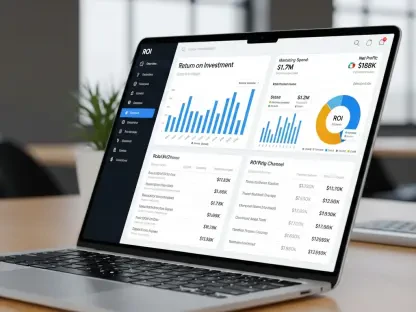The retail industry is in a constant state of flux, perpetually adapting to new trends and economic pressures. Recently, trade tariffs have raised significant concerns regarding their potential impact on retail growth. Despite these looming threats, certain segments within the industry have shown remarkable resilience and strategic innovation. This duality creates a compelling narrative: while tariffs threaten to destabilize economic stability, the retail sector continues to push forward with innovative strategies and resilient growth. As we delve into these dynamics, it becomes evident that the future of retail will be shaped by both challenges and opportunities that require careful navigation.
Trade Tariff Concerns
Several prominent trade organizations, including the Retail Industry Leaders Association (RILA), the American Apparel & Footwear Association (AAFA), and the National Retail Federation (NRF), have voiced strong concerns about the negative implications of the tariffs introduced by President Trump. These tariffs specifically target imports from major trading partners such as Canada, Mexico, and China, with levies set at 25% and 20% respectively. The impact of such tariffs has the potential to ripple through the retail industry, affecting everything from supply chains to consumer pricing and ultimately the purchasing power of American families.
The administration has provided a temporary reprieve for Canada and Mexico, effective until April 2, but the possibility of these tariffs becoming permanent has stirred anxiety within the retail sector. Industry leaders have emphasized the potential economic destabilization and the significant cost increases that these tariffs could impose on consumers. The uncertainty surrounding the permanence of these tariffs adds another layer of complexity to retail operations, prompting companies to strategize for both short-term and long-term impacts. As the deadline for the temporary reprieve approaches, the sector remains on edge, awaiting further announcements and preparing for possible scenarios that could shape the economic landscape dramatically.
Retail Industry Leaders’ Stance
Michael Hanson of the Retail Industry Leaders Association articulated the concerning possibility that these tariffs could undermine economic growth by increasing prices for American consumers, who are already grappling with historic inflation levels. Hanson insists that reconsidering such policies is crucial to safeguard economic stability and to prevent exacerbating already high costs of living. RILA’s stance reflects a broader apprehension within the industry that tariffs could have far-reaching consequences on the economic environment.
Steve Lamar, CEO of the American Apparel & Footwear Association, echoed similar sentiments, highlighting the broader economic ramifications of the tariffs. Lamar pointed out that the instability fostered by these tariffs could erode the dynamically consumer-driven economy that retailers depend on. The AAFA’s concerns underscore the potential disruptions to both supply chains and consumer spending habits, which could derail the delicate balance necessary for sustained economic growth. This sentiment is shared across various retail sectors, as businesses strive to adapt to these evolving economic conditions while maintaining their strategic goals and customer trust.
Financial Pressures on Retail
David French of the National Retail Federation has underscored the detrimental effects that these tariffs could have on American families and businesses. French advocates for a more strategic approach to maintaining healthy economic relationships with significant trading partners, which are crucial for sustaining the retail sector. The financial pressure from these tariffs exacerbates existing challenges in the retail landscape, creating a complex tapestry of obstacles for retailers to navigate. As operational costs increase, retailers may be forced to adjust their pricing strategies, a move that could impact consumer spending patterns and further strain the economic ecosystem.
The financial pressures induced by the tariffs add another layer of complexity to the already volatile retail environment. Retailers face the challenge of balancing cost increases while attempting to retain their competitive edge in the market. This dynamic tension necessitates a strategic recalibration, where businesses must evaluate their pricing models, supply chain logistics, and customer engagement tactics to mitigate the potential fallout. The ripple effects of these financial pressures could permeate through various aspects of retail operations, from product pricing to inventory management, compelling retailers to adopt innovative and resilient approaches to sustain their growth trajectories.
Retail Resilience Amid Challenges
Despite these formidable challenges, the retail sector has demonstrated commendable resilience. Victoria’s Secret, for instance, reported a notable 5% rise in comparable sales during the fourth quarter, alongside a 1% increase in net sales. This performance underscores the adaptive strategies employed by retailers to navigate tough economic conditions. By leveraging targeted marketing campaigns and reinforcing their brand presence, Victoria’s Secret has managed to sustain positive financial performance even amidst a challenging backdrop.
Similarly, Abercrombie & Fitch Co. posted encouraging results, reporting a 9% increase in net sales for the fourth quarter. These achievements highlight the brand’s robust strategic initiatives and market agility, which enable sustained growth despite economic headwinds. Abercrombie’s ability to pivot and adapt to shifting market demands showcases the importance of a dynamic and forward-thinking approach to retail management. These examples of resilience underscore a broader trend within the retail sector, where strategic agility and innovation play crucial roles in mitigating the adverse effects of external economic pressures.
Innovative Product Launches
The introduction of unique products like Sour Patch Kids’ glow-in-the-dark gummies represents a broader trend towards product innovation within the retail sector. These imaginative offerings aim to captivate consumers and maintain competitiveness despite external economic pressures. The novelty and creativity embedded in such products highlight the industry’s commitment to enhancing consumer experiences and fostering engagement. As retailers continue to explore innovative product lines, they breathe new life into the market, ensuring that consumer interest and brand loyalty remain strong.
A similar initiative can be seen with Duke’s Mayonnaise collaboration with Girl Tribe Co. to launch exclusive merchandise for mayonnaise enthusiasts. This collaboration illustrates how brands leverage cultural significance and creative affiliations to expand their reach and fortify market presence. By tapping into niche markets and forming strategic partnerships, retailers can unlock new revenue streams and enhance brand visibility. These innovative product launches not only drive sales but also reinforce brand identity and cultural relevance, positioning retailers to thrive even in challenging economic conditions.
Offline Engagement by Online Brands
There is a growing trend of online brands venturing into physical retail spaces to enhance consumer experiences through tangible, interactive engagements. One notable example is Halara’s recent offline experiment in Austin, Texas. Known for its popular Active Dress via TikTok, Halara organized a scenic trail walk in collaboration with Hot Girl Walk, epitomizing their approach to blending online popularity with offline presence. Such initiatives reflect a strategic pivot by online-first brands to integrate physical touchpoints in their business models.
These offline engagements serve to strengthen the brand’s connection with its audience, offering consumers a more immersive and interactive experience. By directly engaging with customers in physical environments, brands like Halara can foster deeper relationships and create memorable experiences that extend beyond the digital realm. This approach not only enhances brand loyalty but also provides valuable insights into consumer behavior, preferences, and feedback. As online brands continue to explore and expand their offline presence, they contribute to a more diverse and dynamic retail landscape that bridges the gap between virtual and physical shopping experiences.
Strategic Incentives and Performance
Retailers are increasingly adopting structured incentives designed to align leadership goals with company-wide strategies, fostering a cohesive push towards enhancing operational efficiency and market competitiveness. An exemplar of this is Dollar Tree’s executive bonuses. Stewart Glendinning received a $250,000 bonus contingent upon meeting performance targets related to Family Dollar’s review, along with additional equity awards. Such incentives highlight the importance of strategic leadership in driving transformative organizational changes.
By tying executive compensation to strategic performance objectives, retailers can motivate their leadership teams to focus on achieving critical milestones and delivering measurable results. This approach not only promotes accountability and goal alignment but also ensures that leadership efforts are directly linked to the company’s broader strategic vision. As the retail industry navigates complex economic landscapes, these incentive structures play a crucial role in maintaining a competitive edge, driving innovation, and sustaining growth. The emphasis on performance-driven rewards underscores a commitment to excellence and continuous improvement.
Emphasis on Sustained Growth
The retail industry is constantly evolving, adjusting to new trends and economic pressures. Recently, trade tariffs have incited significant concerns about their potential impact on retail growth. These concerns have created a sense of uncertainty within the industry. Despite these looming threats, various segments within retail have demonstrated noteworthy resilience and strategic innovation. This duality crafts a compelling narrative: while tariffs pose a risk to economic stability, the retail sector continues to advance with innovative strategies and resilient growth. For example, many retailers are leveraging technology and e-commerce to adapt to changing consumer behaviors and economic conditions. Additionally, some segments have diversified their supply chains to mitigate the impact of tariffs. As we delve into these dynamics, it becomes clear that the future of retail will be shaped by a blend of challenges and opportunities demanding careful navigation. Ultimately, the ability to innovate and adapt will determine the sector’s success amid these uncertainties.









